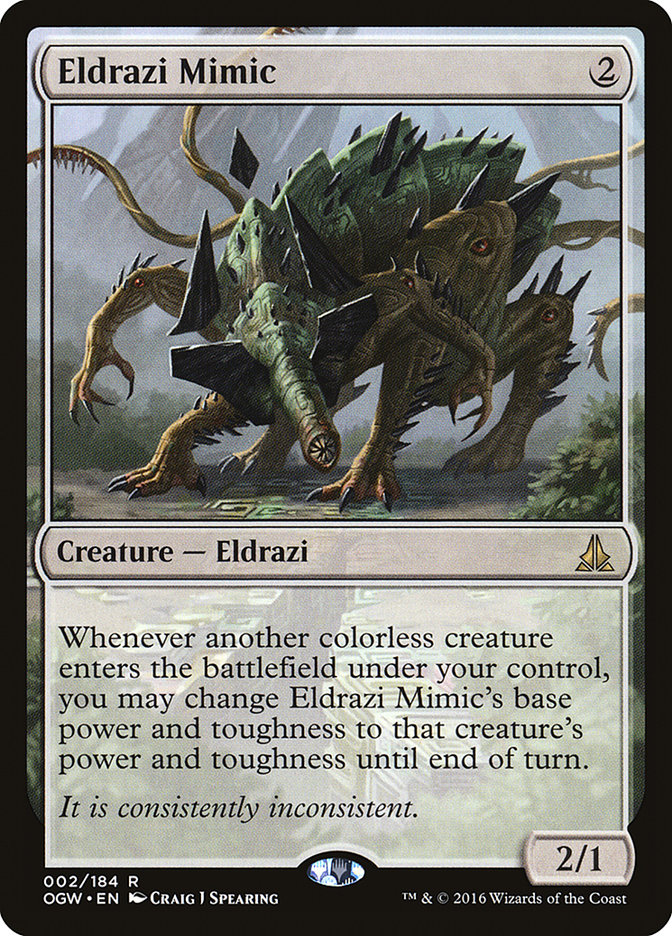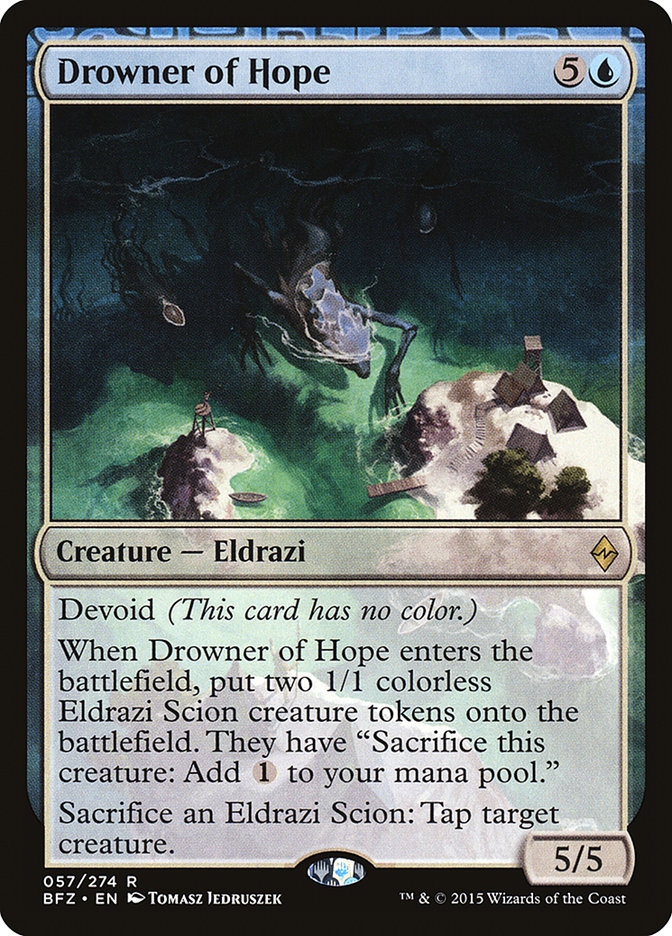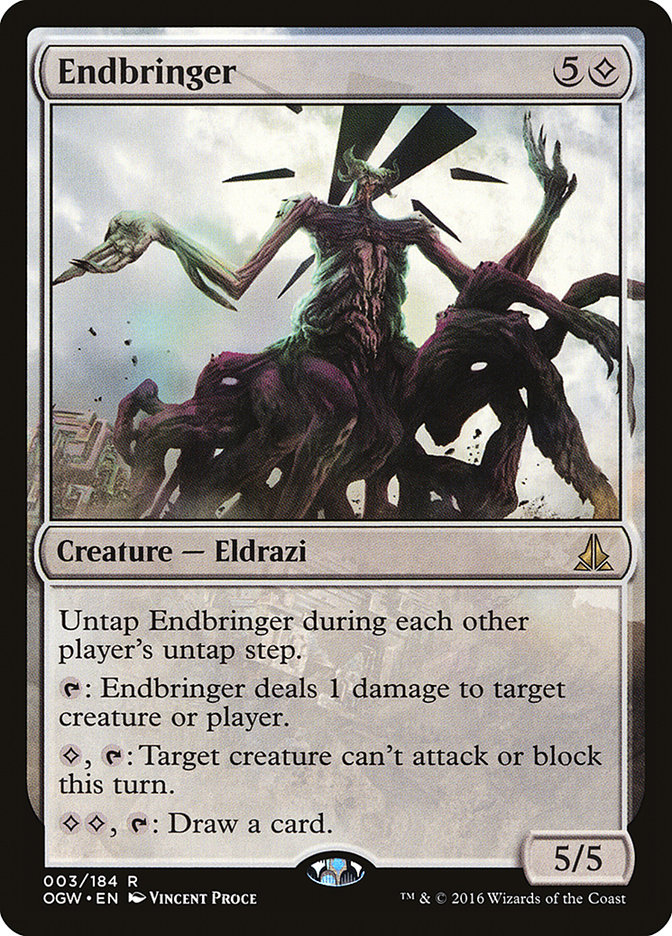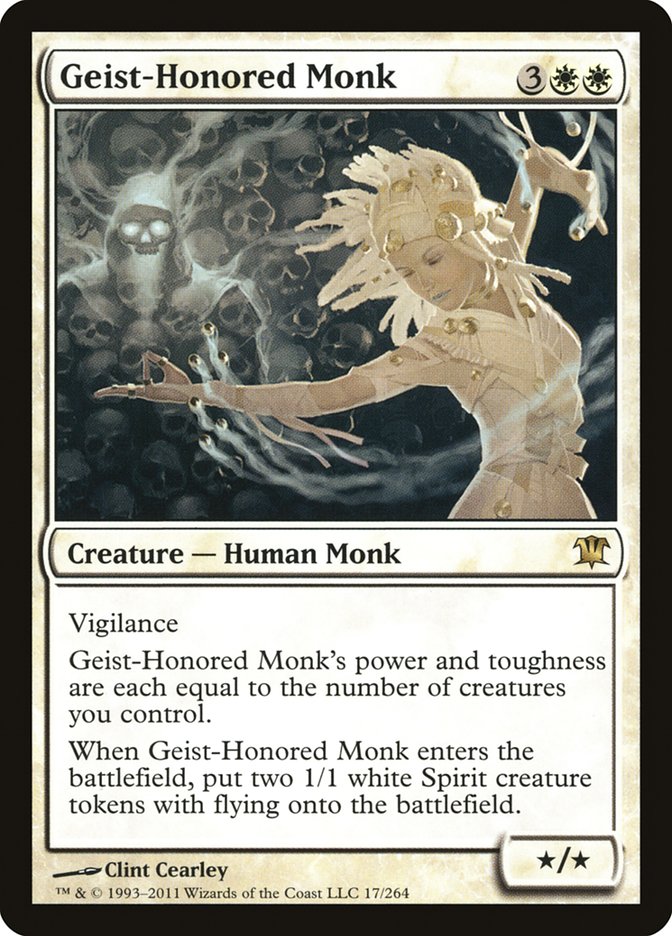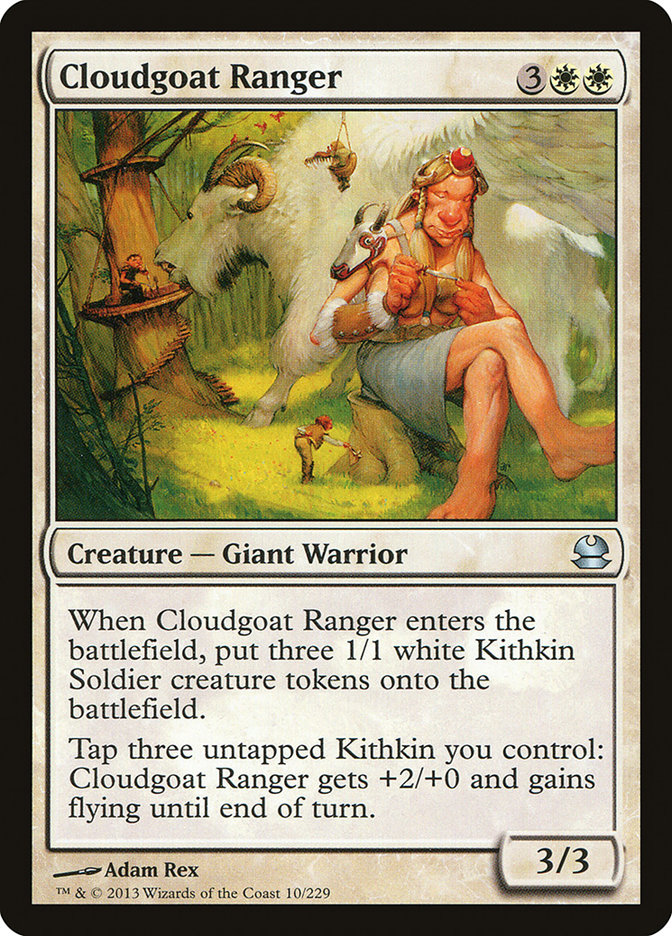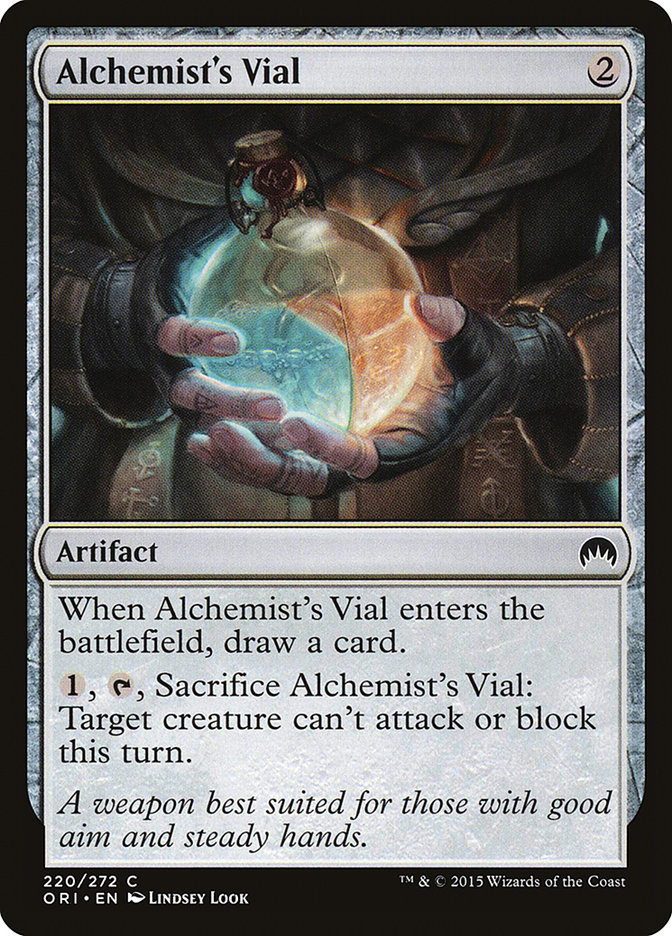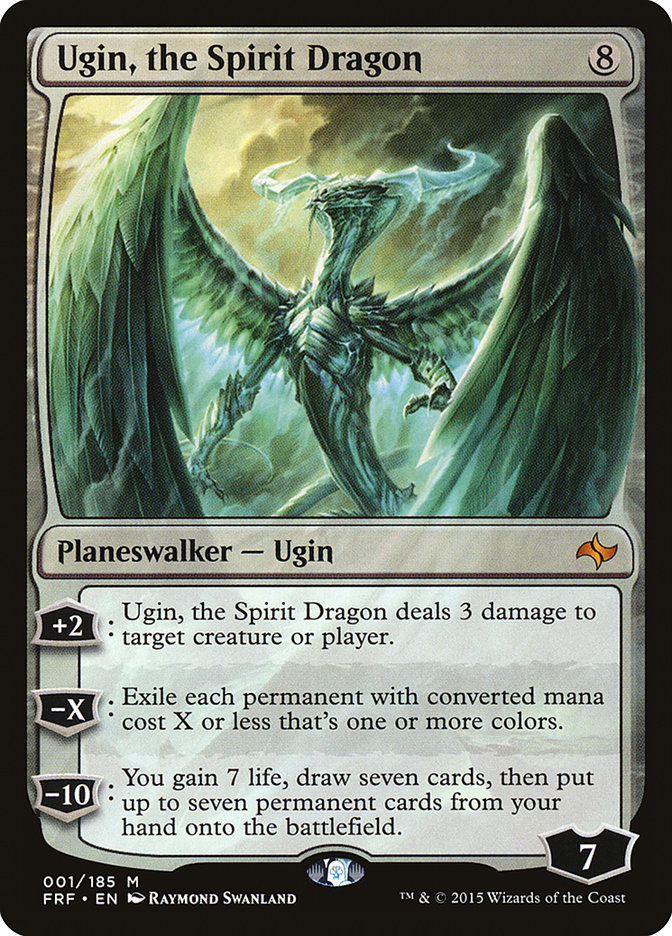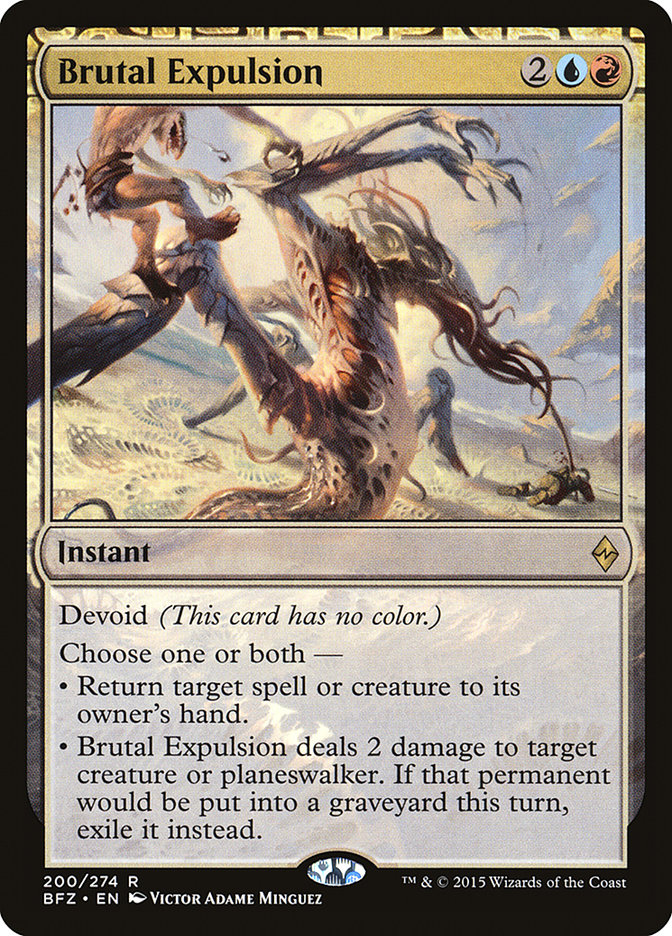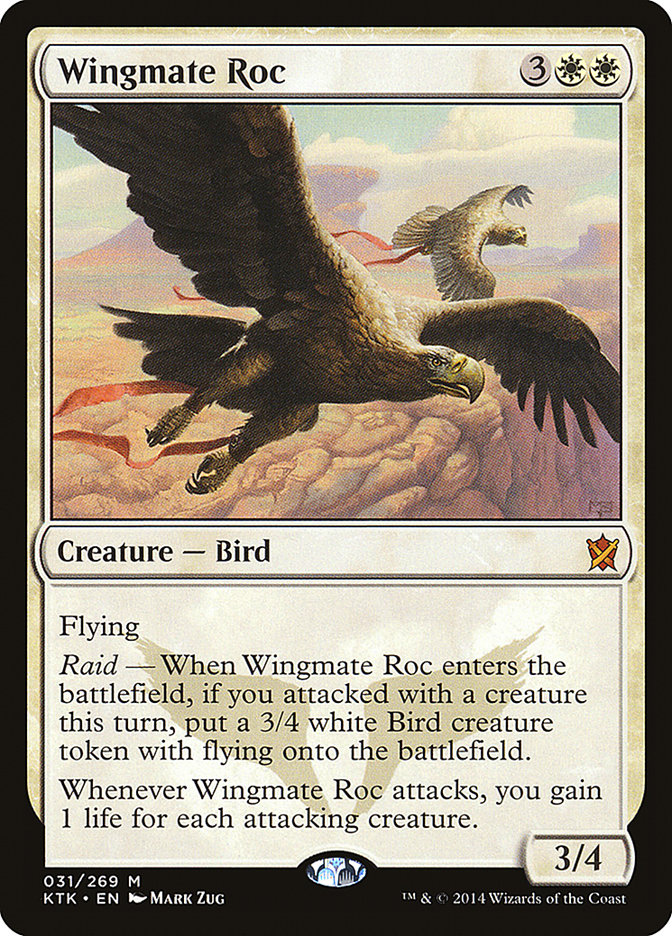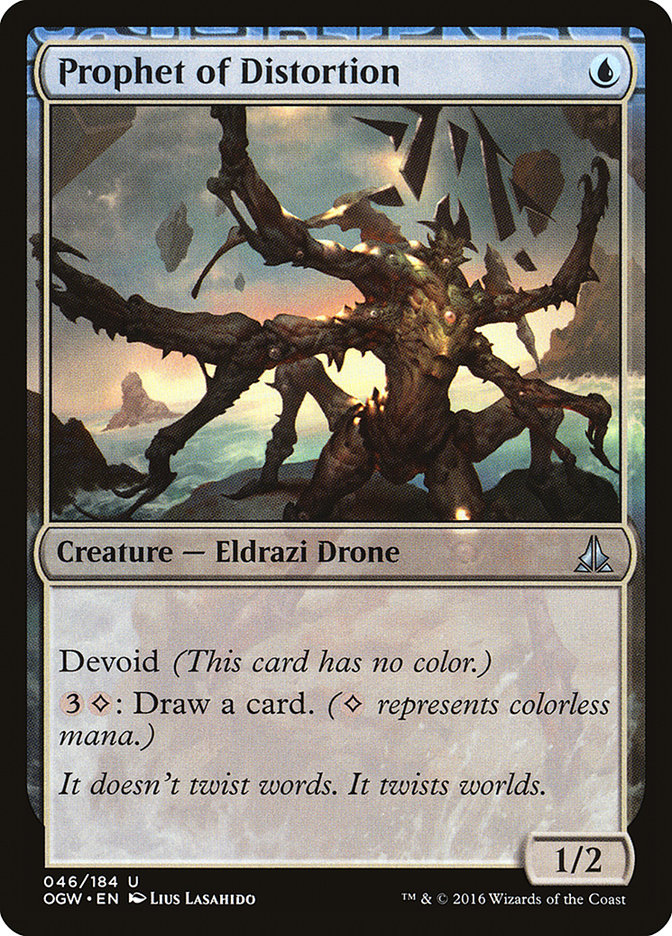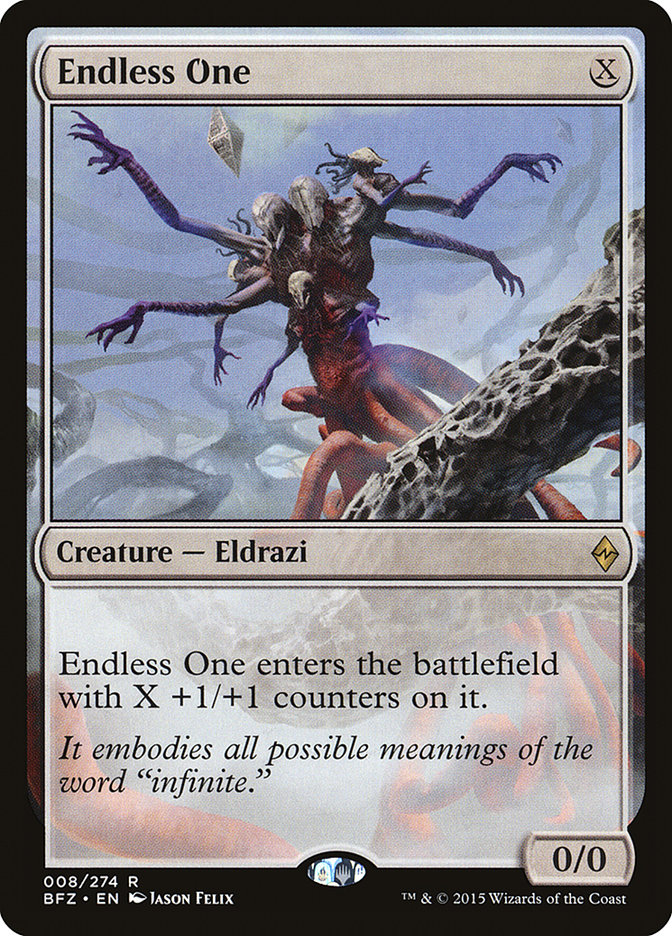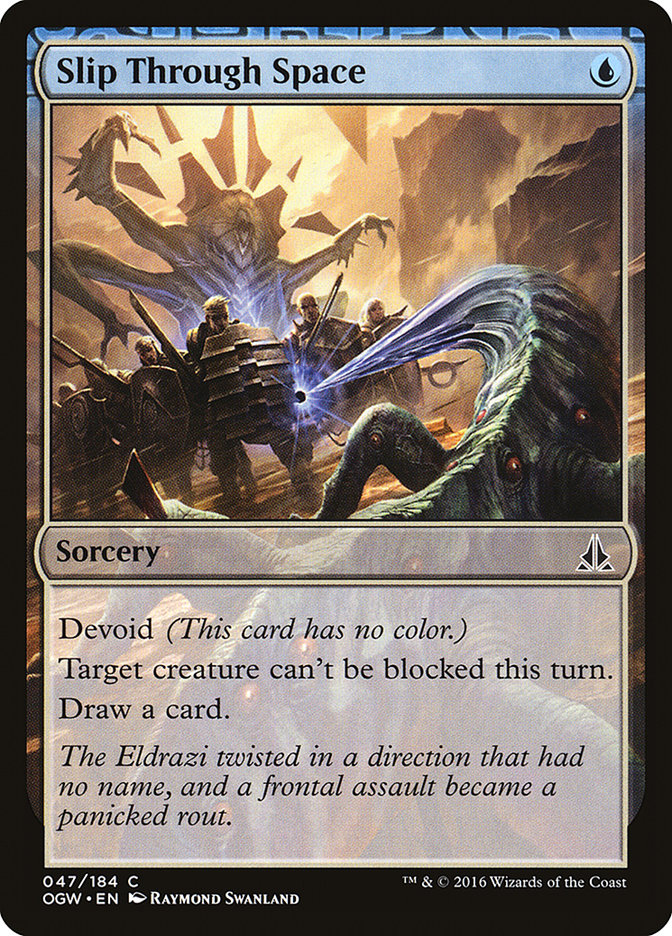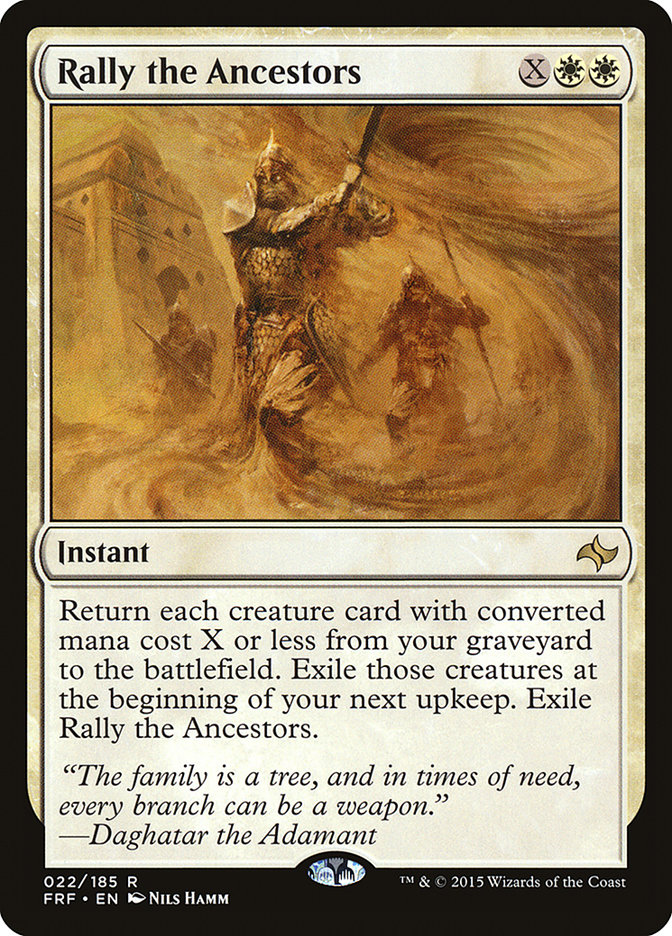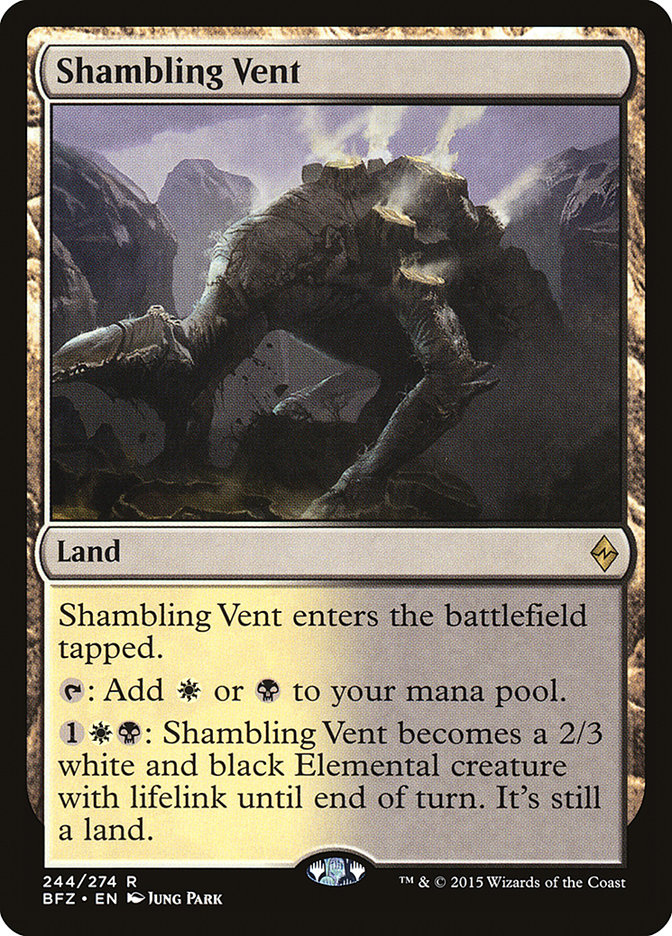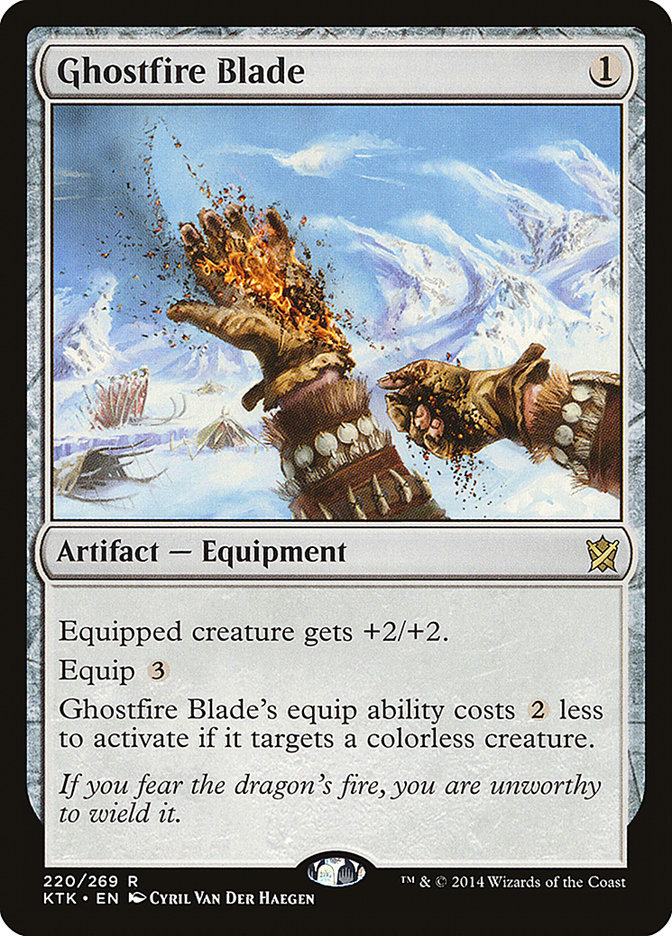Much like Grease, Eldrazi’s the word.
It doesn’t matter what format you’re looking at, the Eldrazi have slithered in and are taking charge. Legacy, the one major format that had up to now escaped the otherworldly grasp of the Eldrazi, is now also starting to come under their eldritch influence. Gerry Thompson and three other players piloted Colorless Eldrazi to Top Sixteen finishes at #SCGPHILLY in Legacy, a format dominated by established, foundational decks, proving that the Eldrazi can unseat norms anywhere they land.
Creatures (21)
Lands (25)
Spells (14)
Sideboard

Well, except Standard.
Oath of the Gatewatch has delivered the majority of the Eldrazi that are currently in vogue, but Standard only features a couple of them as fixtures. Ulamog, the Ceaseless Hunger and World Breaker are staples in Eldrazi Ramp, while Thought-Knot Seer and Reality Smasher have seen some trial level of play in various midrange builds. However, none of them have made the massive impact that they have in other formats.
It’s possible that the strongest Eldrazi in other formats aren’t the best here, where fast mana and consistency create oppressive board states. Our current Standard is all about card density and value more than speed, so we need to locate these particular Eldrazi and try them out.
A much-lauded uncommon from Battle for Zendikar, Herald of Kozilek provides a way to play some of the bigger, more powerful Eldrazi that match the “card density” requirements of the current format. Blue and red both provide lots of Eldrazi themselves, and reducing the cost of colorless spells also makes artifacts and other Devoid spells easier to cast. Where can this reduction get us?
These six-drops represent the best high-cost Eldrazi in the format that don’t require an entire deck full of support cards. Both have seen play in the Eternal versions of Eldrazi decks, so they clearly have the raw power required to sustain a game state. All we need is the supporting framework.
Here we go, maybe there’s a chance here!
Creatures (15)
Planeswalkers (1)
Lands (25)
Spells (19)

We are in full Devoid Control mode; take the powerful Eldrazi, relevant colorless spells, and whatever consistency in the spells and manabase is required to help us get to those Eldrazi with plenty of life and cards left to defeat our opponents.
Creatures
Herald of Kozilek has a mountain of potential. Reducing colorless costs is incredibly relevant, allowing us to break out of the normal “one-spell-a-turn” paradigm of Standard. It’s not just a ramp card, it’s an enabler for the entire deck’s strategy. Drowner of Hope is much like Geist-Honored Monk, Siege-Gang Commander, or Cloudgoat Ranger.
On a clogged board, it gives you options; on an empty board, it puts you way ahead, adding multiple creatures to your side of the battlefield. Drowner of Hope is a really special creature: very rarely does blue get multiple creatures for one spell and an activated ability that costs no mana and can be activated immediately. This is the deck’s protection, workhorse, and finisher. Thought-Knot Seer is a good role-player, acting as a way to get ahead on board while ripping one of your opponent’s best card away. Like Thoughtseize and other targeted discard, Thought-Knot Seer and the rest of the deck are fast enough to prevent opponents from having enough draw steps to recover from its effect. The ramp and reduction effects help us play relevant spells every turn that will make them wish they had the card we stole. Endbringer is another finisher, but its flexibility is a huge boon against opponents who try to outpace you with card advantage.
Spells
Despite the colors of mana that are available to us, we have a completely colorless suite of spells. Warping Wail provides a Scion for ramping to a quick Thought-Knot Seer or exiling an early creature. The Envelop mode is also useful against a large number of decks, and it’s cheap enough to ride along with another spell in any given turn. Spatial Contortion is a great Last Gasp, but it can also be used on every nontoken creature in this deck as a power boost. Herald of Kozilek’s reduction does not reduce the colorless mana cost of these two spells, just the generic mana cost, but one mana is still a great rate for either effect. Titan’s Presence has fifteen creatures that provide enough power to hit most early creatures. You’re built to be revealing five-power creatures, so you’ll be able to exile nearly anything along the way.
Alchemist’s Vial can be made free, however, and it gives you a one-turn pause in combat for any of your opponent’s targetable creature. In effect, Alchemist’s Vial is a colorless Elvish Visionary: it replaces itself and it invalidates a single attack (the green version chump blocks and dies). Hedron Archive’s cost can be reduced by the Herald, just like every other spell in the deck. The ability to draw cards is highly relevant in a deck that only has eight spells above four mana. Ugin, the Spirit Dragon is the most expensive spell in the deck, and thanks to the ramp and reduction it can be cast as early as turn five. Because our entire deck is colorless, we are utterly immune to Ugin’s minus ability.
Lands
Herald of Kozilek has the advantage of helping every single spell in the deck and the disadvantage of being the most color-intensive card in the deck. While Shivan Reef and the other blue/red lands make sense, Battlefield Forge and Yavimaya Coast prove how deep we’re going. In fact, there are no basic lands at all in this particular list. The Scion production is high enough here to make Tomb of the Spirit Dragon relevant, and Spawning Bed supports that plan.
Sideboard
Spell Shrivel benefits greatly from Herald and is easy on the deck’s mana compared to something like Void Shatter. With just one Herald this is way better than Mana Leak, and two Heralds make this outstanding. Cranial Archive is a synergy-friendly answer to decks that use their graveyards like Rally the Ancestors. Like Alchemist’s Vial, its cost can be reduced to zero, letting you get the most out of your mana each turn. Crumble to Dust is a reduction-friendly answer to Eldrazi Ramp or Rally the Ancestors, targeting their Sanctum of Ugin or Canopy Vista respectively. Eldrazi Obligator is also a nice choice for Eldrazi Ramp, stealing their Ulamog or any high-powered creature they’re relying on heavily. Remember, Drowner of Hope can give us the one-turn window to make that trigger just that much more relevant. The Obligator is also a nice choice against control opponents who take out its fast removal spells like Fiery Impulse. World Breaker and Sire of Stagnation, which can be played off eight and four lands in the deck respectively, are nice choices to bring in against control matchups to provide more durable threats. Brutal Expulsion… well, I just kinda wanted to try it.
I took this to a casual Wednesday event after testing it against ramp and a couple generic midrange decks with moderate success. Against my first opponent, Mardu Green, I struggled to outpace my opponent’s consistent threats. In game two, I answered four Siege Rhinos with combat, two Thought-Knot Seers and Ugin. With all that, I never pulled ahead until I cast Ugin. I lost in game three after he curved out and I struggled to make a relevant play. In round two I played against a G/W Megamorph deck and realized I can do very little about a raided Wingmate Roc. Without drawing Ugin, I was toast. I got a bye with my 0-2 record and disassembled the deck in a bit of a salty rage.
The moral of the story? Ugin is awesome and should have been represented in a much higher quantity. I added the one copy I had, but it really needed to be more. There were many situations that Ugin would fix very cleanly and provide a real threat. I could get it out fast enough that I wouldn’t ever need to cast and spend Ugin all at once. Endbringer underperformed so I relied heavily on Drowner of Hope, and while it was good, it couldn’t hold the burden alone. Thought-Knot Seer was also underwhelming, mostly because it felt awkward trying to protect it. Titan’s Presence got considerably worse as the game went on. In round two, I cast an Endbringer as a critical Titan’s Presence sad idly by after he killed the Endbringer. My bad.
A quick reworking of the deck with some more relevant early action can make this better. Here’s this!
Creatures (13)
Planeswalkers (3)
Lands (25)
Spells (19)
Sideboard

This looks a bit better and acknowledges the critical role Ugin plays. I just always wanted to draw Ugin and I had no problem getting to eight mana, so let’s rely on him for the rebuild.
But back to the Wednesday event.
As I begrudgingly broke down my deck I’d been so proud of, I had a thought. Herald of Kozilek was good at keeping costs down, but it could also be used for its efficient stats and we could play some spells that could be nearly free with Herald. One thing that this experience taught me is that playing early spells makes your opponent consider how to deal with them, which means they’re expending resources instead of doing what they want until they can cast good spells that are often better than yours. So let’s get aggressive instead.
Blue and Red have great aggressive options, and the manabase turned out to work well for this deck. Let’s keep it going, and get red instead!
Creatures (20)
- 3 Herald of Kozilek
- 4 Endless One
- 4 Kozilek's Sentinel
- 1 Vile Aggregate
- 4 Prophet of Distortion
- 3 Eldrazi Obligator
- 1 Immobilizer Eldrazi
Lands (22)
Spells (20)
Sideboard

This straightforward deck takes the complex interactions in the previous iteration and narrows them to an aggressive core. As is the case with most Devoid Aggro decks players have built since their release, Ghostfire Blade is a central part of the plan… and we want a whole set of them to make that work.
Creatures
Prophet of Distortion and Endless One are solid turn one plays; this deck wants to use its turns efficiently, and we have ways to boost their power.
Kozilek’s Sentinel, a card that even I’d completely ignored, has a bizarre set of stats for a red creature but its high toughness makes it nearly impossible to kill early. Wielding a Ghostfire Blade it has a whopping six toughness. Roast doesn’t kill it, Grasp of Darkness doesn’t cripple it, and you need two Draconic Roars in order to finish the job. Every spell the deck casts gives it a power bonus, too. Herald is a little more secondary here, and Eldrazi Obligator seems a little better in an aggressive deck where it can easily come down on-time just to keep the pressure on. Vile Aggregate and Immobilizer Eldrazi are pretty neat one-of’s, but I can’t imagine a scenario where you’d want a bunch. The Aggregate’s trample is pretty relevant with Ghostfire Blade even if it’s the only creature you’ve got.
Spells
Spatial Contortion is a tempo spell here, either as cheap removal or as an effective Titan’s Strength on any creature with a Blade on it. Alchemist’s Vial and Slip Through Space cantrip to help us keep the land count low while going well with Kozilek’s Sentinel.
This is a tempo deck, and each of these let you slip a high-powered creature through to make your opponent consider being more defensive. Consuming Sinkhole is the closer, letting you drop your opponent’s life total by huge chunks at a time, and being an instant gives it all the more flexibility especially with our post-board counterspells.
Lands
There are some basics this time and, while I literally never activated Wandering Fumarole in the other deck, here it provides significant additional pressure. There’s still eighteen untapped lands that provide colored mana, so we can keep the land count low.
Sideboard
Kozilek’s Return cleans up tokens and provides us a way to attack a wide-angle deck like Atarka Red that would otherwise be out of reach in our tempo plan. If you cast a big enough Endless One, you can even trigger it from the graveyard for five damage and some creatures equipped with a Ghostfire Blade will even survive it! Crumble to Dust is a great choice again, as we’re likely dead to Ulamog or even a World Breaker exiling a Ghostfire Blade. Spell Shrivel sits in the sideboard this time, and Dispel, while lacking Devoid, is about as good an answer as you can get to decks like Bant Company, Four-Color Rally, or anything that relies on Dig Through Time.
Horribly Awry can be reduced to just one blue mana with a Herald out, and the fourth Herald in the side make expensive spells like Crumble to Dust and Consuming Sinkhole more achievable.
I tried this one in between Friday Night Magic games this past weekend and the results were hilarious. I was able to beat up Mardu Green, two Ramp decks, a Bant Company deck and an Esper Dragons deck, all before sideboarding. In one game I resolved all four Ghostfire Blades on turn four thanks to Herald of Kozilek, equipped all of them and smashed for eleven. Kozilek’s Sentinel was as good as I’d hoped, and Consuming Sinkhole was actually outstanding. The card has a lot of potential in a deck like this, and it’s excellent at closing games. Even if they stabilize at eight, they’re just two spells away from death. Also, exiling a Shambling Vent in the Esper Dragons deck felt pretty fantastic. This is a great spell, and if the metagame shifts to include more creature lands it might be an outstanding sideboard option.
My mistake previously was in keeping the mana costs too high and the threat density too low. The consistency of the aggro deck was encouraging, and the creatures had just enough extra abilities to make the deck relevant in the long game. It felt a whole lot like the U/R Prowess decks; Kozilek’s Sentinel basically has Prowess, and Spatial Contortion was an offensive spell about half the time. Dodging removal was pretty easy too. Even after several games it still felt fresh and exciting, and I don’t think I’d change much of anything about the build: every card had its place.
Devoid and the Eldrazi associated with it have made their splash in Eternal formats, but the more obscure ones can be relevant in Standard. Where have you been using these other Eldrazi to their best potential?


